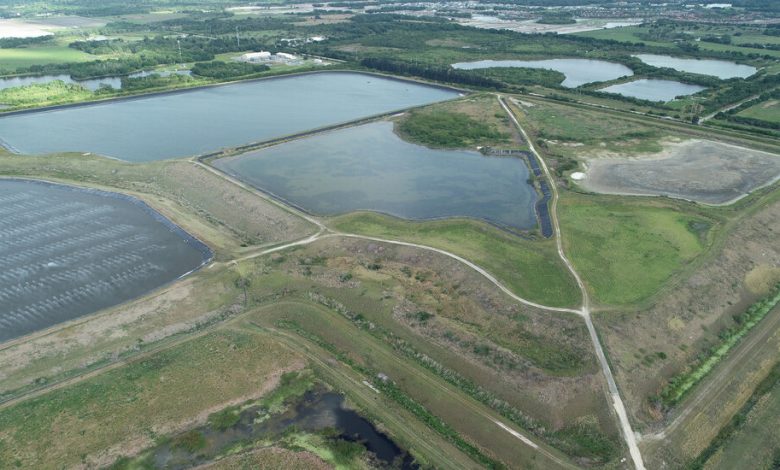Downpours From Ian Prompt Florida Treatment Plants to Release Waste

As of Thursday afternoon, excess water from Hurricane Ian had prompted at least a dozen wastewater treatment facilities in Florida to discharge either raw or partially treated waste, which can contain bacteria or other disease-causing organisms as well as high levels of nitrogen and phosphates, according to the state’s Department of Environmental Protection.
Now, as the storm heads toward South Carolina, attention is turning to sites there that might be at risk.
Charleston, which is in the projected path of the storm, has a number of industrial facilities in low-lying areas that are adjacent to waterways, according to the Southern Environmental Law Center. Those sites include a plastic pellet operation, a paper mill, concrete and asphalt plants and scrap metal facilities.
South Carolina doesn’t require such facilities to submit storm water data or plans to the state, said Geoff Gisler, a senior attorney at the law center, so it is difficult to know how prepared they are. “We have no idea if they are meeting their requirements for normal storms,” he said. “When you get a major storm like this, we are very concerned the facilities won’t be ready.”
Scientists say storms like Ian are being made more powerful and more unpredictable by climate change.
Further inland, the state is home to hundreds of farms, including poultry operations and other types.
More on Hurricane Ian
- On the Ground: Before Hurricane Ian, Florida’s southwest coast was a place to escape the chaos. Now, the storm has turned the laid-back stretch of suburban shoreline into a strand of destruction.
- Lack of Insurance: In the Florida counties hit hardest by Hurricane Ian, fewer than 20 percent of homes had flood insurance, new data show. Experts say that will make rebuilding even harder.
- Ron DeSantis: The Florida governor, who as a congressman opposed aid to victims of Hurricane Sandy, is seeking relief from the Biden administration as Hurricane Ian ravages his own state.
- Air Travel: Ian’s effects on flying, in Florida and beyond, are likely to continue through the weekend. This is what to do if your plans are disrupted.
Blakely Hildebrand, a senior attorney at the law center, expressed concerns that high rainfall could cause poultry manure, which is often kept in uncovered pits, to run into waterways.
In 2018, floodwater and heavy rain from Hurricane Florence caused industrial sites in the Carolinas to overflow. More than a hundred manure lagoons flooded, releasing nutrient-rich pig waste, which can contribute to algal blooms, into the environment.
Although several wastewater treatment sites in Florida had reported discharging waste, it could be days, weeks, or even years before there’s a complete assessment of the harm, said Erik Olson, senior director for health and food at the Natural Resources Defense Council. “Until people pull soil samples, you don’t know what the damage might be,” he said.
After Hurricane Katrina in 2005, there were more than 600 spills of hazardous materials, at locations including several Superfund sites and sewage treatment plants. Two years after Katrina, soil samples taken by the N.R.D.C. found elevated arsenic levels at playgrounds.
Another reason the extent of the damage may be difficult to immediately discern is because of the many smaller types of infrastructure, like home septic tanks, that are not monitored by the state.
And farms, golf courses and municipal parks sometimes use large amounts of fertilizer, which can enter rivers and streams, particularly after heavy rain and flooding.
The state doesn’t monitor runoff at those locations, said Catherine Kling, an environmental economist at Cornell University who has worked on water quality with the Environmental Protection Agency. “These are just everywhere, and a small leakage from a lot of them can add up to a lot of impact on the environment,” she said.
Phosphates and nitrogen, which are commonly found in high concentrations in fertilizers and sewage, represent the largest water quality problem in the United States.
Marine ecosystems in Florida have been particularly degraded by such runoff over the past few decades. Last year, more than a thousand manatees died in Florida, part of a record die-off that has been linked to pollution and algal blooms.
Before the storm made landfall in Florida, environmental groups had expressed concerns about the open-air wastewater ponds associated with Florida’s phosphate mining operations. Florida produces most of the country’s phosphate, a key component of fertilizers, in a region east of Tampa called the Bone Valley.
The pools at those phosphate sites can hold hundreds of millions and, in some cases, billions of gallons wastewater containing radon, uranium, radium and other carcinogens, said Ragan Whitlock, a staff attorney for the Center for Biological Diversity.
Concerns centered on Piney Point, a phosphate plant that is in the process of being shut down, and a pond at Mosaic-New Wales, a phosphate manufacturing site. Representatives for both operations confirmed on Thursday that they had not detected any breaches.



